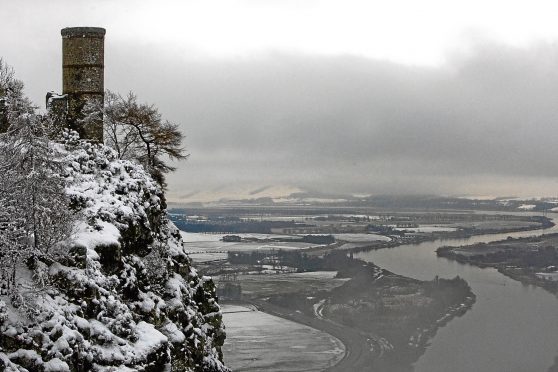Did you notice that last Friday, December 1, the day you hung up your advent calendar (because nothing says Christmas like chocolate coins), and the first day of meteorological winter, it got milder?
After a string of beautiful days that weather forecasters insist on calling “crisp” (why do they do that?), cloud moved in through the afternoon, the temperature climbed, and it rained.
And in the cafe where I like to read the papers over a flat white, they were playing In the Bleak Midwinter:
“In the bleak midwinter/ Frosty wind made moan/ Earth stood hard as iron, Water like a stone/ Snow was falling, snow on snow/ Snow on snow / In the bleak midwinter/ Long ago…”
Christina Georgina Rossetti’s 19th Century verse displays a poetic verve a cut above the humdrum hymn-cum-carol in the Church Hymnary. Poetry was her day job after all, and she was one of her century’s finest.
Bleak?
After that first verse, however, Hymn 50, as the Kirk has come to think of it, descends into standard Christmas story fare, but that first immortal verse is winter in a nutshell.
In particular, I admire: “Snow had fallen, snow on snow/ Snow on snow”. The word “snow” used five times in two lines – now there’s a poet’s daring for you!
The word I have a problem with is “bleak”. Lyrically it’s perfect, but such a fusion of ice and relentless snow is the stuff of wonder and beauty, nature at its utmost.
The unwritten next verse should have been the one that reassures: soon the snow would stop, the sun would explode across that snow-on-snow landscape, and diamond dust would drift through village streets so that children would laugh and dance at the miracle of it, and neighbours would come out of their houses and stand in front of their doors, pointing and smiling, cheered and invigorated and enraptured.
But which of us can remember the last time that happened? Whatever happened to bleak midwinter?
Worries
The forecasters and the bookies suggest we’re in for one this winter, the coldest temperatures since records began and other headline-grabbing nonsense.
Last year, when the Met Office introduced meteorological winter with what they called “a spell of anticyclonic gloom”, no one batted an eyelid.
Yet this crazily fluctuating weather is something we should all worry about, not global warming (though the globe is warming), not climate change (though the climate is changing), but climate chaos.
You can argue that the rise and fall of our idea of winter began with the Little Ice Age, which tormented much of the northern hemisphere between the early 15th and the mid-19th Centuries.
It first manifested itself as the spread of pack ice and storm in the far North Atlantic. Norse colonies in Greenland were cut off from the influence of their masters on the European mainland. Iceland was likewise cut off by sea ice.
Over the course of the Little Ice Age, the average annual duration of that sea ice grew from none at all to 40 weeks. All across the northern hemisphere, glaciers extended their reach.
But Greenland was the beginning of it all.
Now, science is alarmed by the condition of a huge glacier in northmost Greenland, called Zacharie Isstrom. This was the very cradle of the Little Ice Age, and right now, it is melting at the rate of five billion tons a year.
We might be in for a couple of cold months, in which case I have no doubt at all that those climate change sceptics who regularly contribute to the letters pages of this newspaper will be sharpening their quills and offering us homilies on variations of “you see, I told you so”.
But if you consider the reality, if you study the climatology of the entire hemisphere, if you spend your days deep in nature’s company and listening to the land over decades, you get a different sense of what is going on.
When I began writing a book called The Nature of Winter, shortly after finishing its predecessor The Nature of Autumn, I quickly realised that I was dealing with a very different beast from my autumn book, and perhaps even an endangered one, the Scottish wildcat of the seasons, hybridising before my very eyes into something I barely recognised.
In the Bleak Midwinter has had a life of its own since Rossetti’s lyric was published in 1872. It was set to music by Gustav Holst.
A hundred years later it was voted Britain’s favourite Christmas carol. It was the centrepiece of an episode of Doctor Who, and rumour has it that it made an unceremonious appearance in Peaky Blinders.
But from nature’s point of view, and from that of this nature writer, the only bleak thing about midwinter 2017 is that it stands on the verge of extinction.
